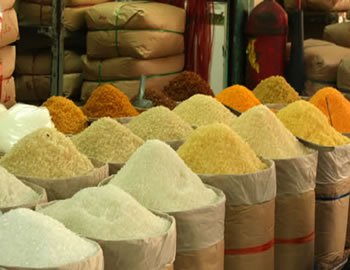
In spite of its being a major staple food in the face of economic crisis, experts have stated that garri, when poorly produced, can cause blindness and when taken in excess also poses significant health threat to the body.
Speaking to Saturday Tribune, ophthalmologist and Group Director of Eleta Eye Institute Complex, Ibadan, Dr Ben Ajayi, said, “Cassava peels contain cyanide which protects the tubers from pests and some animals. For garri, which is derived from cassava roots, to be safe for consumption, cyanide must be completely removed. When the process is incomplete or not properly done, the cyanide becomes toxic to humans when consumed.”
Explaining how this could lead to blindness, Dr Ajayi, who retired as Visiting Consultant Ophthalmologist to the University College Hospital (UCH), Ibadan stated that, “Cyanide is slightly similar in structure to Cyanocobalamin (Vitamin 12). So, it competes with Vitamin B12 replacing it and affecting rapidly growing tissues or tissues that are regularly renewed such as the skin, peripheral nerves and the nerve of the eye – optic nerve. It’s the involvement of the optic nerve which leads to blindness.”
He, therefore, explained that “If a person is eating adequate amounts of proteins and B12, the quantity of the B12 in the blood will neutralise the cyanide and it won’t cause any problem.
“So, for badly processed garri containing cyanide to cause blindness, three other factors must be present: Imbalance Diet deficient in protein; Vitamin deficiency, especially Vitamin B12 and Cyanide present in the garri because of poor processing.”
Dr Michael Richard, a general physician of the Brian Medical Consulting, Ikeja, Lagos, who spoke to Saturday Tribune, described the cassava root as having a high starch (carbohydrate, sugar) deposit, making its excessive consumption compliant to all blood sugar crises.
“Due to the high starch content in garri,” he said, “its excessive intake reduces the chances of the pancreas to regulate the sugar level in the body. And when this habit continues for a long time, the excess sugar flows into the blood stream which circulates round the body. This might cause diabetes, which in turn leads to conjunctivitis, kidney failure, stroke, impotence, among other health complications.”
According to him, “Cassava root is an energy-dense food. The root is a physiological energy reserve with high carbohydrate content which ranges from 32 per cent to 35 per cent on a fresh weight basis, and from 80 per cent to 90 per cent on a dry matter basis. Eighty per cent of the carbohydrates produced is starch; 83 per cent is in the form of amyl pectin and 17 per cent is amylose. Roots contain small quantities of sucrose, glucose, fructose, and maltose.”
The president of the Diabetes Association of Nigeria (DAN), Dr. Alkali Mohammed, added that “the fibre content in garri helps in digestion, prevents intestine track diseases and slows the release of sugar in the body.”
He, however, said that “the fibre content in cassava roots depends on the variety and the age of the root. Usually, its content does not exceed 1.5 per cent in fresh root and 4 per cent in root flour.”
He admonished also that the improper processing of garri will lower the fibre content and increase the presence of harmful chemicals such as cyanide.
He equally stated that the method of processing cassava has been associated with goitre and nervous system breakdown.
“Besides diabetes, which the excess intake of garri might complicate, the product must be properly prepared before consumption. Improper preparation of cassava can leave enough residual cyanide to cause acute cyanide intoxication, goitres, and even ataxia or partial paralysis.”
Also speaking about the health challenges of the frequent intake of garri, Dr. Olubunmi Omojuowolo, a cardiologist at the Lagos University Teaching Hospital (LUTH) and chairman, Nigerian Medical Association, (NMA), Lagos chapter, added obesity as part of fallout of garri over-consumption.
“Too much of carbohydrate is converted into fat and can lead to obesity. If the individual is prone to diabetes, it can worsen the condition,” Dr Omojuowolo said.
Speaking about the processing of garri, he said, “The way garri can be better processed is to make sure that the water, which contains starch and cyanide are properly extracted from cassava. When this is done, garri would be safe for consumption.”
END

Be the first to comment